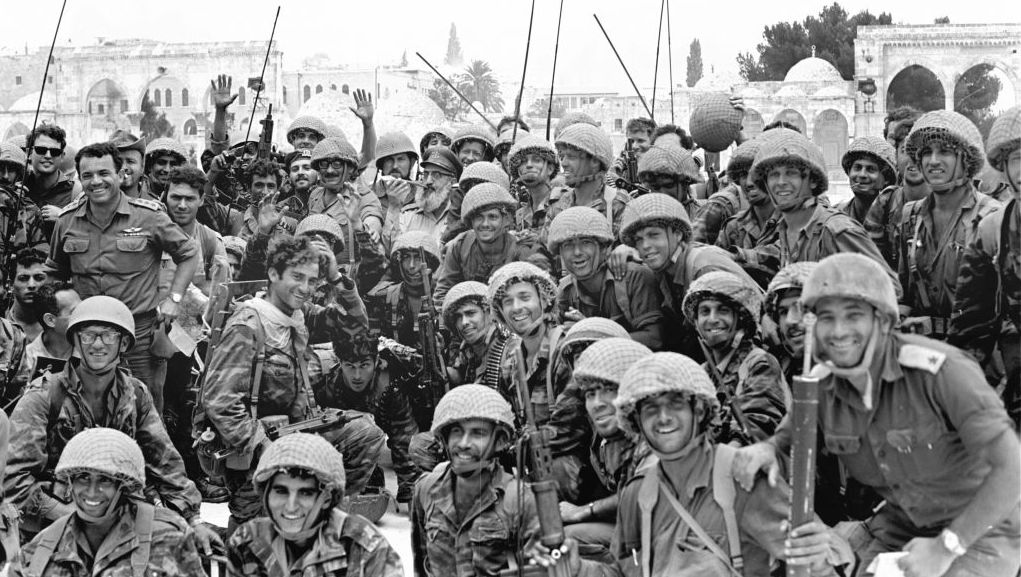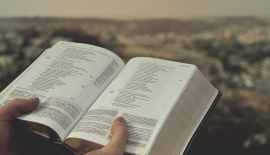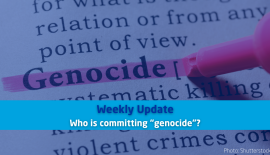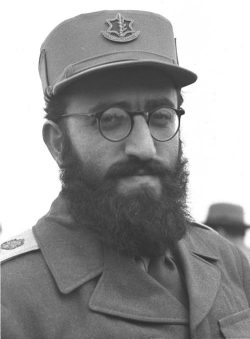Keeping the IDF Kosher
Of all the iconic photographs taken since the 1948 founding of the State of Israel, by far one of the most famous is that of the first head of the military rabbinate, IDF chaplain Shlomo Goren. In the photo he is surrounded by Israeli soldiers at the Western Wall holding a Torah scroll and blowing the shofar. Until today, in many an Israeli home that photo can be found.
That historic moment was captured in 1967 during the Six-Day-War. It was taken minutes after Israeli troops had liberated Jerusalem. For the first time in nearly two thousand years, Shlomo Goren, a Jew, gave a prayer of thanksgiving at the Western Wall. That prayer was broadcast on television to the entire country.
In it he quoted from the book of Lamentations, which is a scroll usually read out on the 9th of Av which commemorates the destruction of both Jewish temples and other historic disasters to befall the Jewish people. When he said, “It is no longer the mourning city but the liberated city. Joyfulness and exultant whose children have returned to her,” it was a magnificent moment which touched the heart of the nation.
A man immersed in the study of the Bible, he knew that Israel’s next mission was to liberate Hebron. Intrinsic to Jewish history, Hebron is one of the four holy cities in Judaism. It is the piece of real estate purchased by a Jew, Abraham, and his burial site along with his wife Sarah, his son Isaac, Rebecca and Jacob.
When Goren and his army driver entered Hebron, they were astonished to see white sheets of surrender hanging out the windows. It wasn’t long before he realized why. Back in 1929, Arabs had butchered 67 Jews to death in Hebron. This new generation of Arabs had chosen to surrender because they were afraid of revenge. Thus as folklore has it, Rabbi Goren had to make his mark. He single-handedly captured a city of 80,000 Arabs without firing a shot. But not to pass up on an opportunity, when he eventually arrived at the Cave of the Patriarchs, he took his submachine gun and riddled the lock on the door with bullets. Then he blew the “Shofar,” just like he had done the day before in the Old City of Jerusalem.
“He made sure that at every army base there should be kosher food, a Sefer Torah, proper festival observances and prayer quorums”
One of the most popular and bridge-building Chief rabbis to be ordained in Israel, Shlomo Goren always opposed separate religious and secular army units. Instead, he dedicated much of his time towards the integration of all soldiers. He was deeply involved in the lives of religious soldiers making their army service could be as Torah-observant as possible. He even managed to persuade Israel’s first Prime Minister – the secular and liberal David Ben-Gurion – that at every army base there should be kosher food, a Sefer Torah, proper festival observances and prayer quorums.
But despite his life’s work entrenched in the Bible and Zionism, Shlomo Goren died a disappointed man. Leading up to the disastrous Oslo Accords, he gave a ruling that Jewish soldiers were not allowed to evict Jewish civilians living in the land. Later, terrible images of Jewish soldiers evicting Jewish civilians from Gaza flooded television screens all over Israel, it was a blow from which he, and many Israelis, never recovered.
“Shlomo Goren declared it to be a religious commandment to make a pilgrimage to the Temple Mount”
Yet his legacy lives on. When Jewish people visit the Temple Mount it is due to the ruling made by Shlomo Goren who declared it to be a religious commandment to make a pilgrimage to the Temple Mount.
Whatever the ups and downs of political decisions, Shlomo Goren knew he had made history when he was the first Jew who blew a shofar at the Western Wall in 2,000 years. He also knew that making history was not enough. History should be sealed by actions too, and pilgrimages to the Temple Mount was one way to do it.





